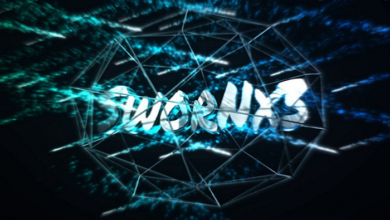After 2TBClark: The Future of Data Storage

In the world of technology, data storage is one of the most important aspects to consider. As we continue to create and accumulate more data than ever before, finding a way to efficiently store it becomes increasingly important. In recent years, we have seen a number of innovations in data storage technology, including the 2TBClark, a breakthrough that has significantly impacted the industry. In this article, we will explore the future of data storage after 2TBClark, including the latest developments, challenges, and potential solutions.
Introduction
The world has been producing data at an incredible rate, and this trend is only going to continue. As we create more and more data, it becomes increasingly important to find a way to store it in a way that is both efficient and secure. The 2TBClark was a major breakthrough in data storage technology, but what comes next? In this article, we will explore the future of data storage after 2TBClark, including the latest developments, challenges, and potential solutions.
The Rise of 2TBClark
The 2TBClark was a major breakthrough in data storage technology. It was the first hard drive to offer 2 terabytes of storage capacity, which was a significant increase from the previous maximum of 1TB. This breakthrough was made possible by a number of innovations, including advancements in data density and the use of new materials for the platters. The 2TBClark quickly became the go-to choice for anyone who needed large amounts of storage, and it has remained popular ever since.
The Latest Developments in Data Storage Technology
Since the introduction of the 2TBClark, there have been a number of new developments in data storage technology. One of the most exciting is the emergence of solid-state drives (SSDs), which offer a number of advantages over traditional hard drives. SSDs are faster, more reliable, and consume less power than hard drives. They also have no moving parts, which makes them more resistant to damage from drops or vibrations.
Another important development is the rise of cloud storage. Cloud storage allows users to store their data on remote servers, which can be accessed from anywhere with an internet connection. This makes it easy to access your data from multiple devices, and it also provides an extra layer of protection against data loss.
The Challenges of Data Storage
While there have been many advancements in data storage technology, there are also a number of challenges that must be addressed. One of the biggest challenges is the need to balance capacity with performance. As data density increases, it becomes more difficult to maintain high read and write speeds. This is why SSDs are becoming increasingly popular, as they offer faster performance than traditional hard drives.
Another challenge is the need to ensure the security of stored data. With so much sensitive information being stored digitally, it is important to ensure that it is protected from hackers and other threats. This has led to the development of new encryption methods and security protocols.
Potential Solutions
To address these challenges, there are a number of potential solutions that are being explored. One of the most promising is the use of new materials for data storage. For example, researchers are exploring the use of graphene, which has the potential to greatly increase data density and read/write speeds.
Another solution is the use of artificial intelligence (AI) to optimize data storage systems. AI algorithms can analyze data usage patterns and make predictions about future needs, allowing for more efficient use of storage resources.
Conclusion
Data storage technology has come a long way since the introduction of the 2TBClark. While there are still challenges to be addressed, there are also many exciting developments on the horizon. From SSDs to cloud storage to new materials and AI, the future of data storage looks promising. As we continue to produce more data than ever before, the need for efficient and secure data storage solutions will only continue to grow. By staying up-to-date with the latest advancements and exploring new solutions to address challenges, we can ensure that we are prepared for the future of data storage.
FAQs
- What is 2TBClark?
- How has 2TBClark impacted the data storage industry?
- What are the latest developments in data storage technology?
- What are the challenges of data storage?
- What are some potential solutions to address data storage challenges?




